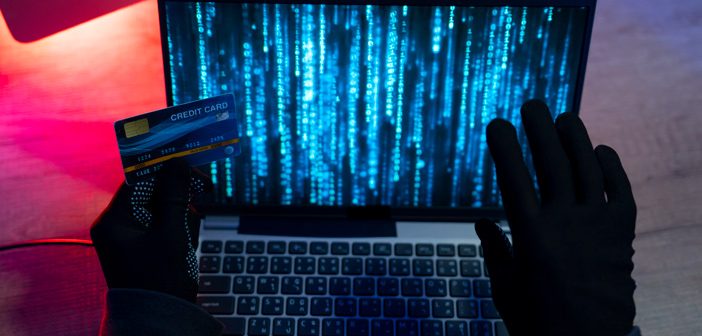In the world of financial crimes, “bust-out” fraud is a tactic that has been gaining attention for its sophisticated nature and devastating impact. It’s a type of credit fraud in which an individual or group exploits financial systems and institutions, often leading to significant losses. But what exactly is bust-out fraud, and why should you be concerned?
What is bust-out fraud?
At its core, bust-out fraud is a type of credit card scheme where fraudsters rapidly build up a line of credit and then “bust out” by maxing out that credit card without any intention of repaying it. This term comes from the notion of “busting” or breaking out of the financial limits set by credit institutions, leaving behind unpaid debts and financial chaos. The scam is often carried out by individuals who appear trustworthy at first, making it particularly difficult to detect.
This fraud typically involves opening multiple credit accounts under false or stolen identities, including credit cards, personal loans, and even store credit lines. Fraudsters may use a range of tactics to get approved for credit, including providing fake financial information, using stolen identities, or manipulating credit scores. Once these accounts are open, they quickly max out the credit available, often by purchasing high-ticket items such as electronics, luxury goods, or cash-equivalent assets.
The ultimate goal of bust-out fraud is to take as much as possible without the intention of ever paying it back. The fraudster may disappear before creditors realize what has happened, leaving financial institutions with the task to try to recover the lost funds. The fraud may go undetected for months or even years, depending on the scheme’s complexity and the creditors’ diligence in monitoring their accounts.
How bust-out fraud works.
The mechanics of bust-out fraud usually unfold in a few distinct stages:
- Initial credit acquisition: Fraudsters first gain access to credit by either applying under false pretenses or using stolen personal information. Sometimes, they may even use synthetic identities, which are combinations of real and fake information, making detection more difficult.
- Building credit history: Once they have initial access to credit, the fraudsters may engage in behavior designed to build their credit history quickly, such as making small purchases and promptly paying them off. This creates the appearance of a responsible borrower, allowing the fraudster to apply for larger lines of credit.
- Maxing out credit: Once sufficient credit is available, fraudsters begin racking up significant debt, often purchasing high-value goods or withdrawing cash. These actions are typically made with the intent of selling the items or converting them into cash as quickly as possible.
- The bust-out: After maxing out the available credit, the fraudsters vanish, leaving behind unpaid bills. At this point, the creditors have no means of recovering the money, and the fraudster is often already far from the area, using fake or stolen identities to cover their tracks.
The impact of bust-out fraud.
For businesses, bust-out fraud can lead to significant financial losses. Financial institutions may end up writing off the unpaid debt, which can impact the products and services they offer customers. Put another way, when someone shoplifts from a business, it affects the business and its customers in the form of higher prices and increased security measures (such as products being locked up) that diminish the shopping experience. Furthermore, the costs of investigating and recovering from these scams can be substantial. If a fraudster has used your personal information to obtain credit, the aftermath of bust-out fraud can include damage to your credit score and difficulties obtaining credit in the future.
Additionally, bust-out fraud can contribute to a larger financial crisis. Fraud schemes that go unnoticed can fund other illegal activities or cause instability in financial markets. The widespread use of synthetic identities and online data has made this fraud even more difficult to detect and prevent, posing new challenges for financial institutions and regulators.
How to protect yourself from bust-out fraud.
There are several ways you and businesses can protect themselves from becoming victims of bust-out fraud.
- Harden access: The use of multi-factor authentication (MFA), credit freezes, and other identity protection measures can help limit the ability of fraudsters to misuse your stolen information.
- Educate yourself: You should remain informed about the latest fraud tactics and red flags to look for. For example, is this the first time you’ve heard of bust-out fraud? Staying informed can help you stay safe. Visit our Current Scams page, continue to read our blogs, and visit our Security Center for information on current scams and ways to protect yourself.
- Monitor monthly: Regularly monitoring your credit reports, transaction histories, and bank or Credit Union statements is essential to spotting fraudulent activity early. You can check your score once a month for free with no impact on your credit report by using our Credit Score Tool in Tulee. If you haven’t signed up for Tulee yet, enroll now.
- Report suspicious activity: If you notice any suspicious activity on your credit report or bank statements, contact your financial institution immediately to report it. Call us directly at 800.877.2345. When in doubt, call. It’s better to check on suspicious activity early, helping prevent loss, than take a wait-and-see approach.
- Consider a credit freeze: Placing a credit freeze on your credit report can prevent new accounts from being opened without your authorization. Our upcoming Card Controls Tool in Tulee will enable you to freeze your Credit Union Credit and Debit cards with a few clicks. Look for more information about this new tool soon.
- Protect personal information: Be mindful of what personal information you share online and with unfamiliar companies. Don’t overshare.
- Use strong passwords: Create strong, unique passwords for all online accounts and avoid reusing passwords across different platforms. Remember, the longer and more complex the password, the better. Avoid common words, sequential numbers or letters, and personal information, and don’t reuse passwords across multiple accounts.
Final thoughts.
We hope this blog has helped you better understand bust-out fraud. By staying vigilant and implementing strong safeguards, you can reduce your risk of falling victim to this deceptive and costly scam. We urge everyone to regularly review their credit report, Credit Union, and credit card statements for unusual or suspicious activity. If you spot any transactions that seem out of the ordinary or charges from businesses you don’t recognize, contact us or your financial institution immediately. Remember, we will never call or text you asking for your personal information. If you suspect you’ve been a victim of fraud or identity theft, call us directly at 800.877.2345.





